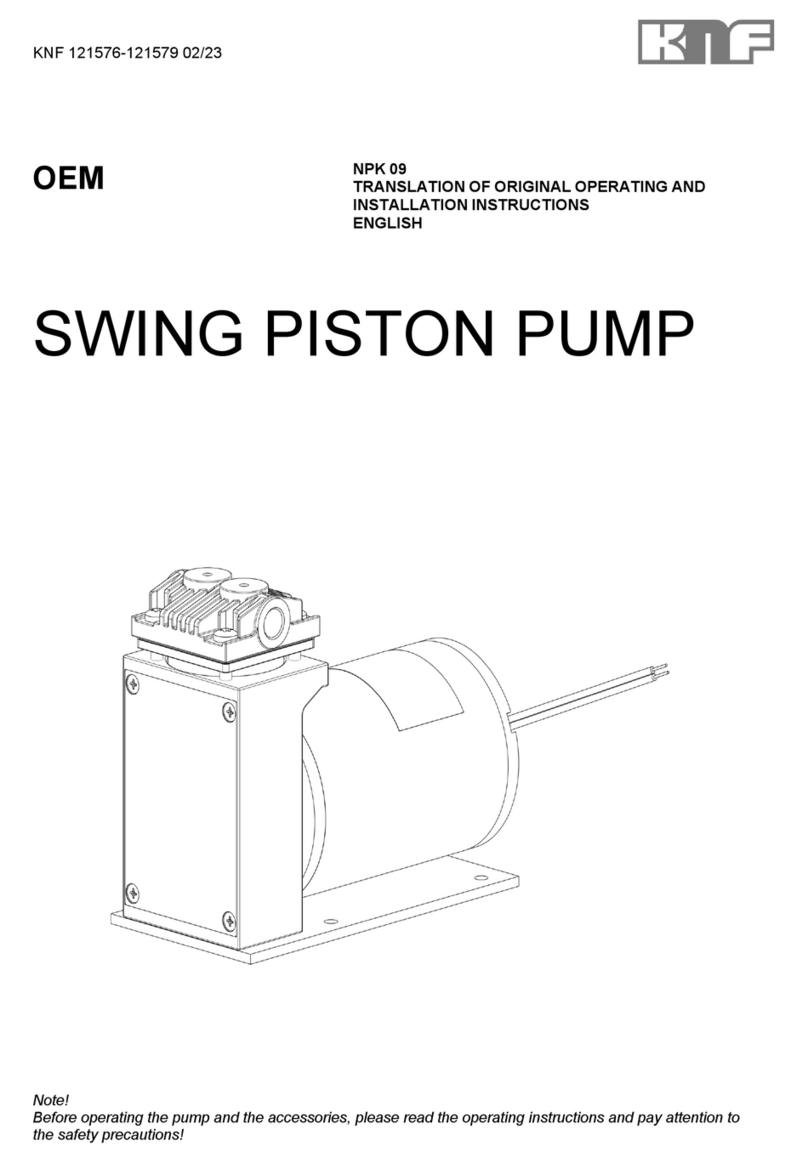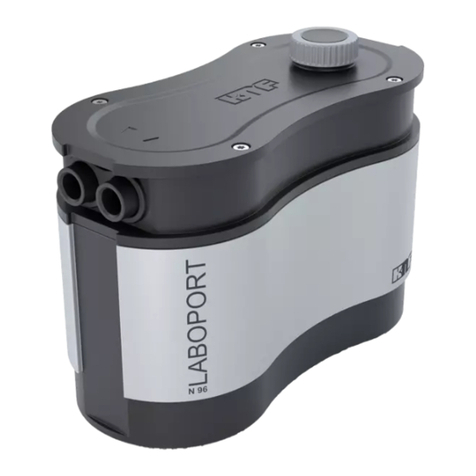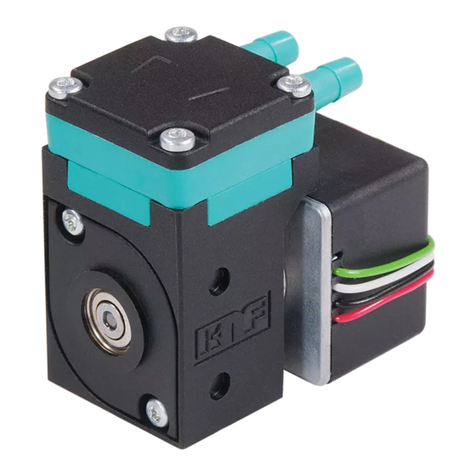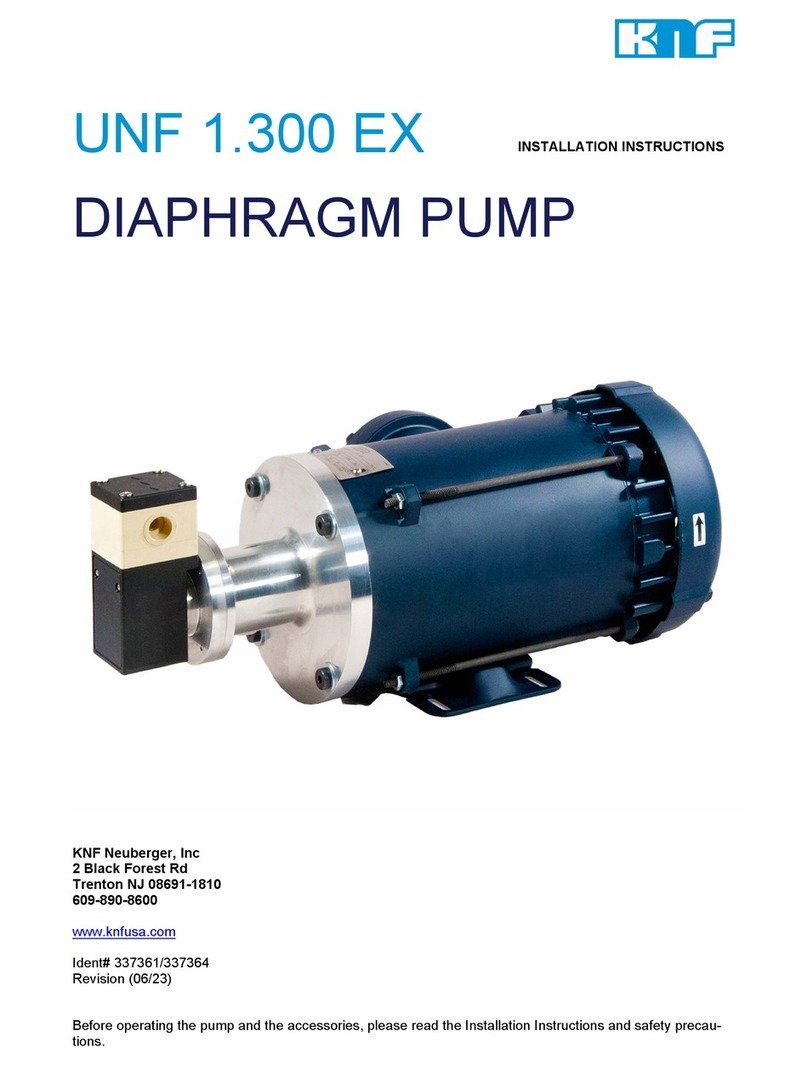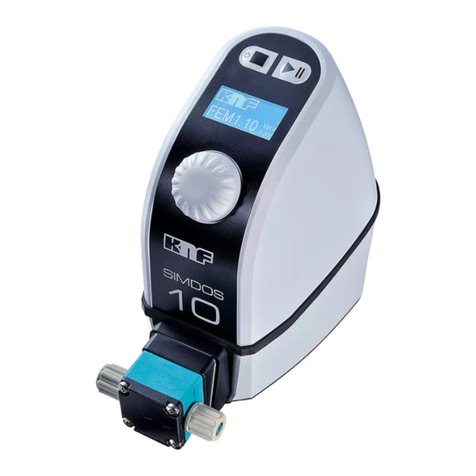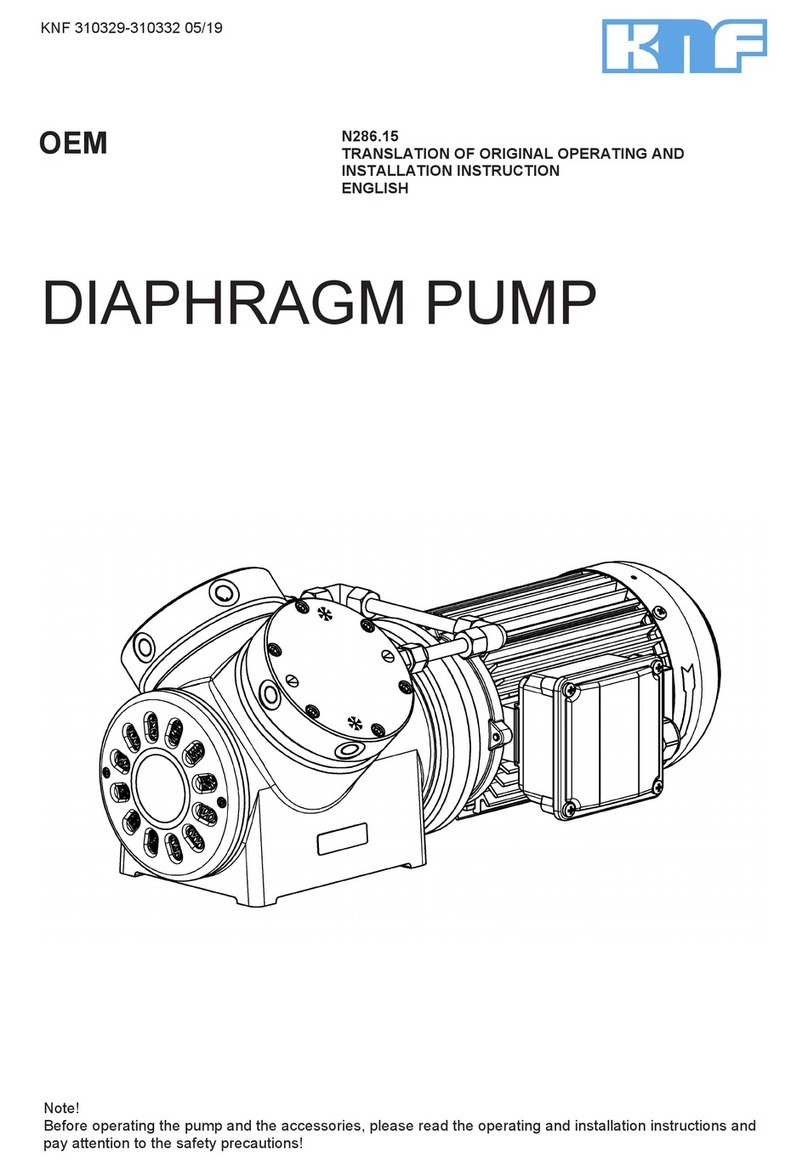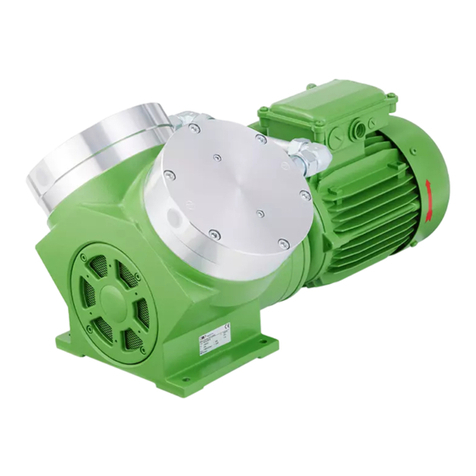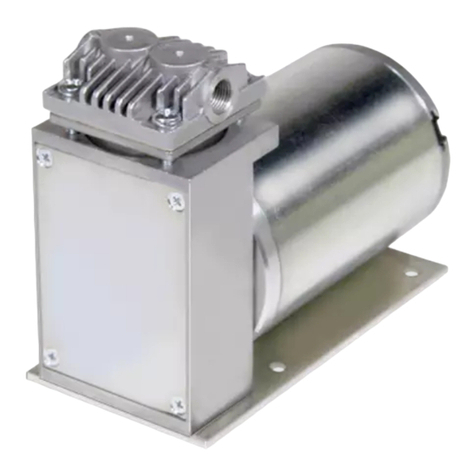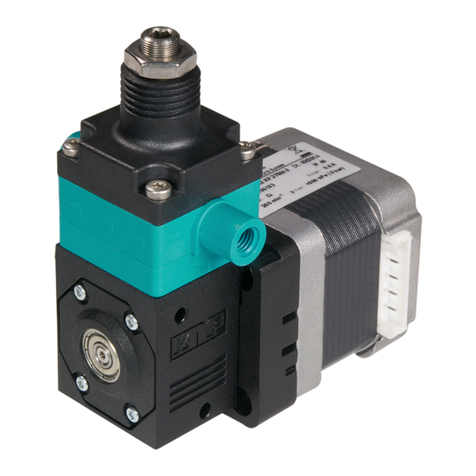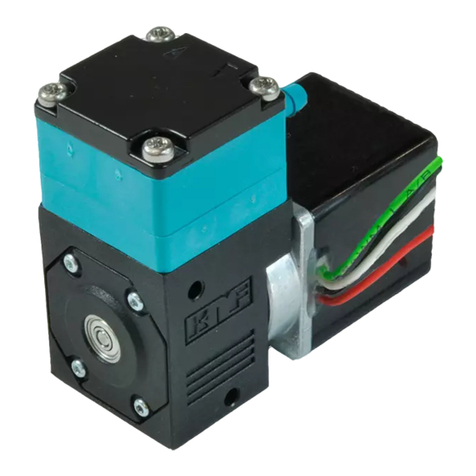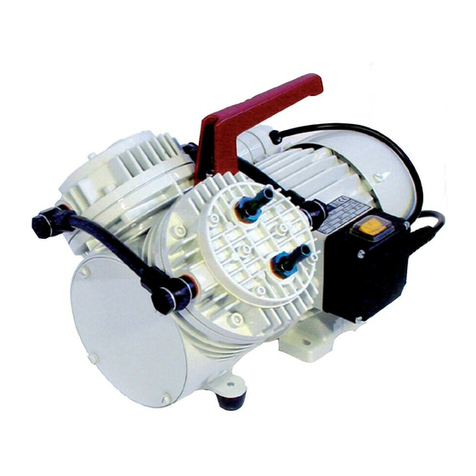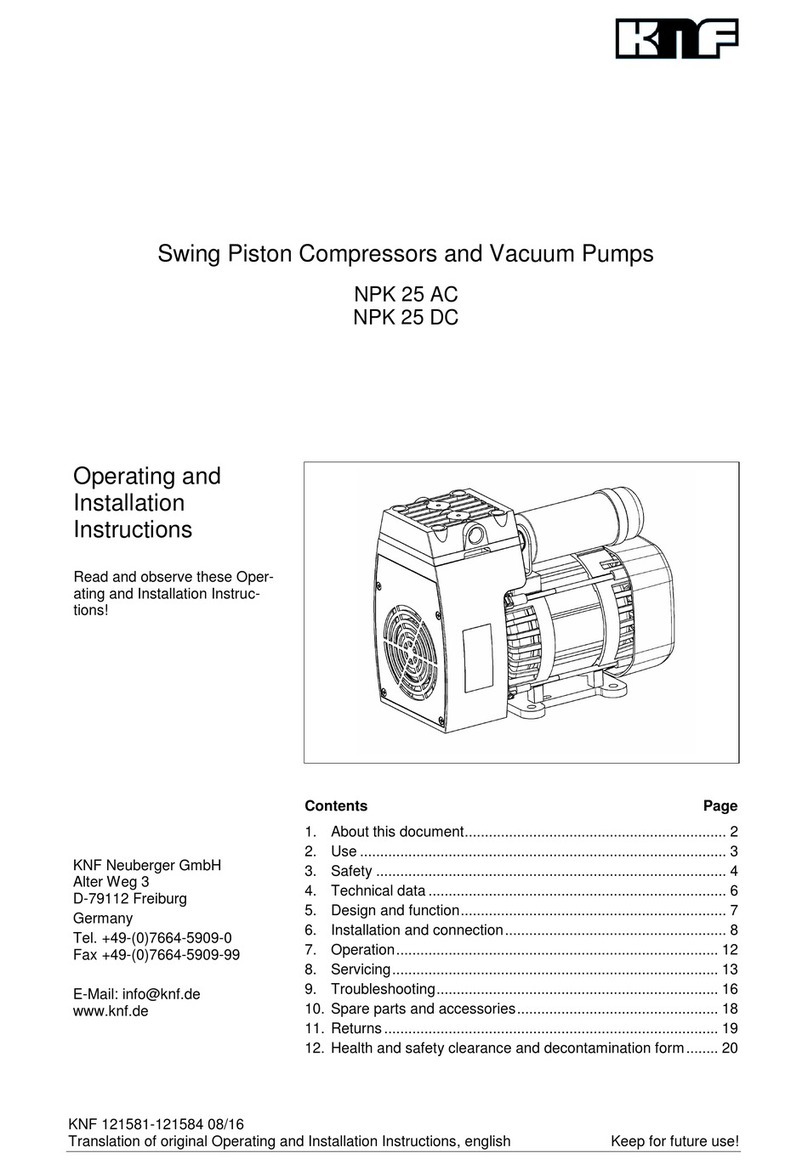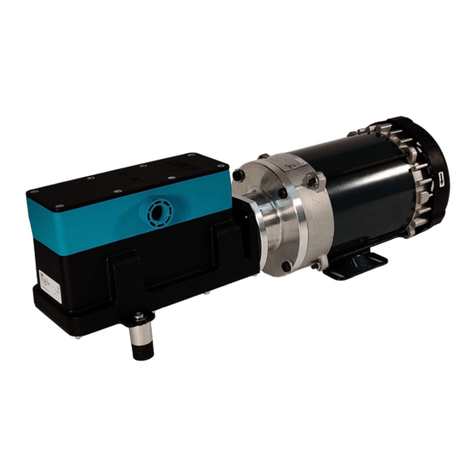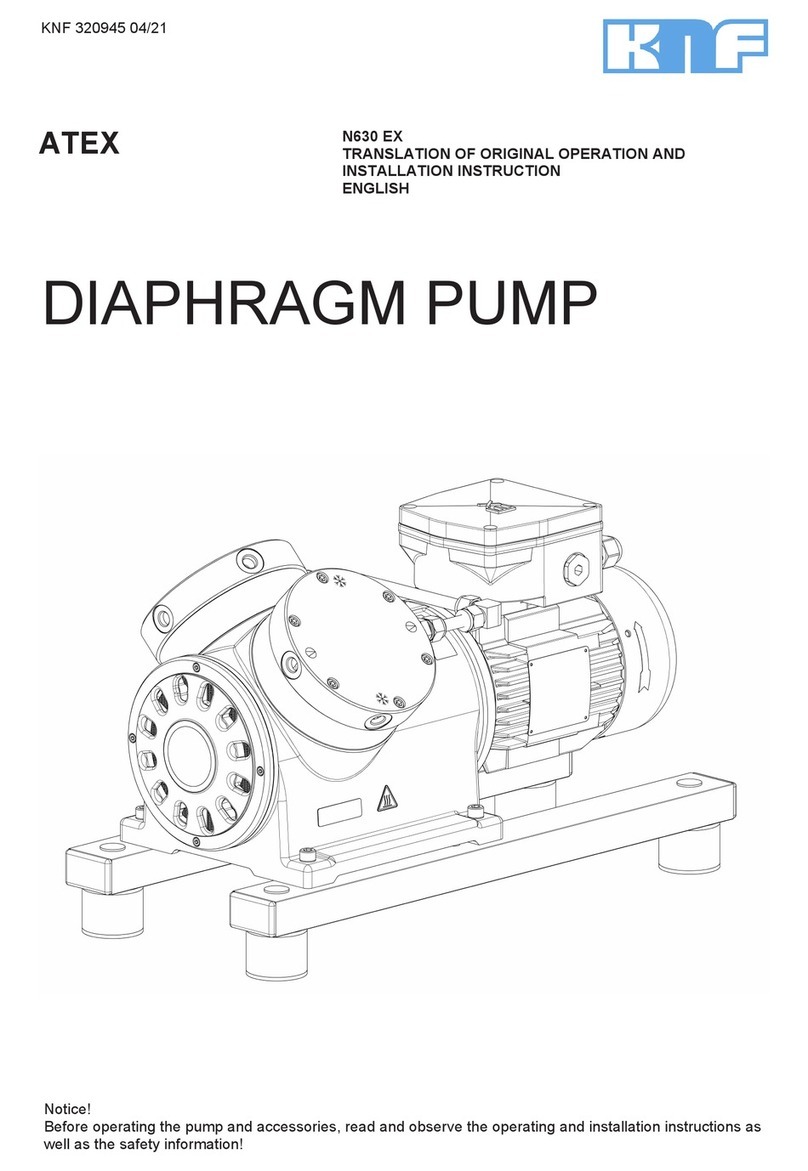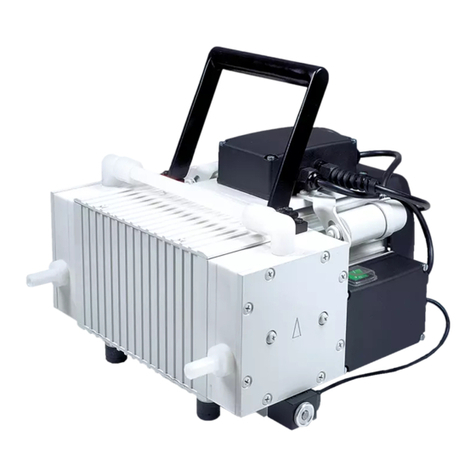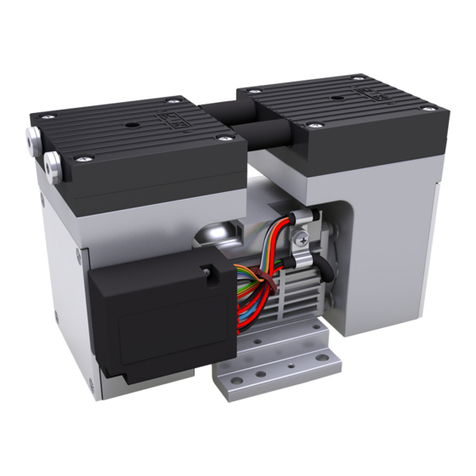
Safety N 810/820/840.18 EX
10 Translation of original Operating Instructions, English, KNF 309515-309518 06/17
4. Safety
Note the safety precautions in chapters 7. Installation, mount-
ing and connection,
and 8. Operation.
The pump is built according to the generally recognized rules of
technology and in accordance with the occupational safety and
accident prevention regulations. Nevertheless, dangers can result
during their use which lead to injuries to the user or others, or to
damage to the pump or other property.
Only use the pump when it is in a good technical and proper work-
ing order, in accordance with its intended use, observing the safety
advice within the operating instructions, at all times.
Make sure that only trained and instructed personnel or specially
trained personnel work on the pump. This especially applies to
assembly, connection and servicing work.
Make sure that the personnel has read and understood the operat-
ing instructions, and in particular the "Safety" chapter.
Observe the accident prevention and safety regulations when
performing any work on the pump and during operation.
Do not expose any part of your body to the vacuum.
Open housing parts with notice sticker (see Fig. 2) only after
separating mains plug from power source.
When transferring dangerous media, observe the safety regula-
tions when handling these media.
Remember that the pump is suitable only for transferring explosive
atmospheres and may not be installed in potentially explosive
areas.
Make sure the temperature of the medium is always sufficiently
below the ignition temperature of the medium, to avoid ignition or
explosion. This also applies for unusual operational situations.
Note that the temperature of the medium increases when the pump
compresses the medium.
Hence, make sure the temperature of the medium is sufficiently
below the ignition temperature of the medium, even when it is
compressed to the maximum permissible operating pressure of the
pump. The maximum permissible operating pressure of the pump
is stated in the technical specifications (see chapter 5, page 12).
If necessary, consider any external sources of energy, such as
radiation, that may add heat to the medium.
In case of doubt, consult the KNF customer service.
Store all replacement parts in a protected manner and dispose of
them properly in accordance with the applicable environmental
protection regulations. Observe the respective national and inter-
national regulations. This especially applies to parts contaminated
with toxic substances.
conscious manner
Handling flammable media and
explosive atmospheres


















